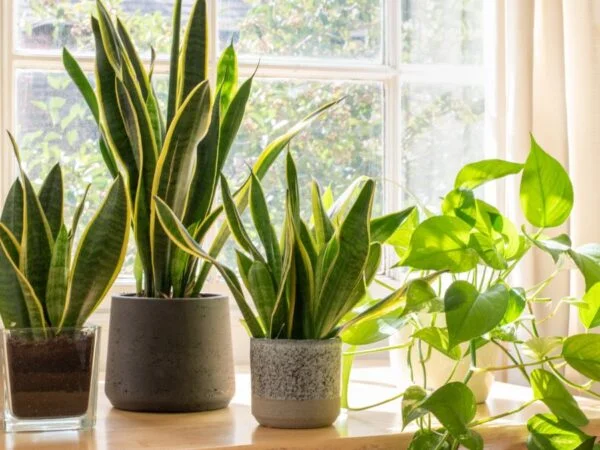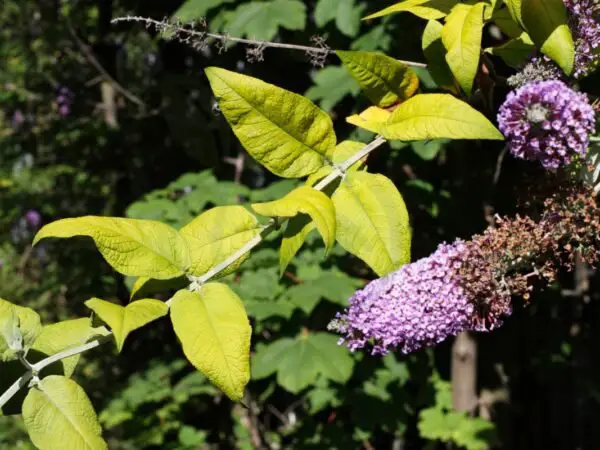Planting irises is a rewarding experience. These beautiful flowers have been cherished for centuries. They symbolize hope and wisdom in various cultures. Originating from Europe and Asia, irises thrive in diverse climates. With their vibrant colors and unique shapes, they attract gardeners worldwide.
Growing irises isn't just about aesthetics; it's about creating a stunning landscape. They require minimal care and can bloom year after year. This guide will provide essential tips on how to plant iris effectively. You'll learn the best techniques for soil preparation, watering, and sunlight requirements. Get ready to transform your garden with these stunning blooms that bring joy and beauty to any space.
About Irises
Iris Plant Overview
Irises are known for their six-petaled structure. Each flower has three outer petals and three inner petals. This unique shape makes them stand out in any garden. Irises come in many colors, including blue, purple, yellow, and white.
These plants are also resilient. They can thrive in various soil types and tolerate drought conditions. This makes them easy to grow for both novice and experienced gardeners. Irises attract pollinators like butterflies and hummingbirds. These creatures enjoy visiting the flowers for nectar, helping with plant reproduction.
Types of Irises
Several common types of irises exist. Tall bearded irises are popular for their height and vibrant colors. Siberian irises are shorter and have slender leaves.
Bearded irises have fuzzy growth on their petals, while crested irises lack this feature. Crested varieties often have a smoother texture. Lesser-known types include Japanese water irises, which thrive in wet areas. These irises produce beautiful blooms that float above the water.
Iris Plant Uses
Irises add aesthetic value to gardens and landscapes. Their bright colors create stunning displays during blooming seasons. They work well in borders or as focal points in flower beds.
Many people enjoy using irises as cut flowers for arrangements. Their sturdy stems and long-lasting blooms make them ideal for bouquets. Irises can brighten up homes or special events.
These plants also attract beneficial wildlife to gardens. Pollinators like bees help with the overall health of a garden ecosystem. By planting irises, gardeners can support local wildlife while enjoying beautiful flowers.
Best Time to Plant Irises
Ideal Planting Seasons
Late summer to early fall is the best time to plant irises. This timing allows roots to establish before winter. Healthy roots lead to vibrant blooms in spring.
Timing is crucial for optimal growth. If planted too late, irises may not survive the cold. Conversely, planting too early can lead to weak plants due to heat stress. Observing local climate patterns helps determine the right moment. For example, if winters are mild, you might plant a bit earlier.
Climate Considerations
Full sun exposure is essential for healthy iris growth. Irises thrive in well-lit areas with at least six hours of sunlight daily. Lack of sunlight can result in weak stems and fewer blooms.
Temperature variations also affect blooming periods. Some irises bloom earlier in warmer climates, while others wait for cooler weather. Choosing irises suited for your local conditions ensures success. Research local varieties that perform well in your area.
Soil Preparation Tips
Testing soil pH is vital before planting irises. The ideal pH level is neutral to slightly acidic, around 6.0 to 7.0. A simple soil test kit can help determine this.
Amending soil with organic matter improves fertility. Compost or well-rotted manure enriches the soil and supports growth. Mix this organic matter into the top few inches of soil before planting.
Good drainage is necessary to prevent rhizome rot. Irises do not like sitting in waterlogged soil. Adding sand or perlite can enhance drainage if your soil retains too much moisture.
How to Plant Irises
Planting irises can be a rewarding experience. These beautiful flowers bring color and life to any garden. To ensure success, follow these steps carefully.
Selecting the Right Spot
Choose a location that gets 6 to 8 hours of sunlight each day. This amount of light helps irises thrive. Avoid shaded areas or crowded spaces. Irises need room to grow and breathe.
Accessibility is also important. You should easily reach the area for maintenance tasks like watering and weeding. Picking the right spot sets the foundation for healthy plants.
Preparing the Soil
Start by clearing away debris and weeds from your planting area. This step prevents competition for nutrients. Next, loosen the soil with a shovel or a garden fork. This action improves aeration and drainage, which are crucial for root health.
Incorporate compost or well-rotted manure into the soil. This addition enriches the soil with nutrients. Healthy soil supports strong growth in irises.
Planting Steps
Dig holes for your iris rhizomes at the proper depth. Generally, they should sit about 2 to 4 inches deep in the soil. Space each rhizome adequately, around 12 to 24 inches apart. This space allows them to grow without overcrowding.
Position the rhizomes with their tops exposed. This placement ensures they receive enough light and warmth to encourage growth. Proper planting techniques lead to vibrant blooms.
Watering Guidelines
After planting, establish a consistent watering schedule. Newly planted irises need moisture but do not overwater them. Allow the soil to dry out between waterings. Too much water can cause rot.
Using mulch can help retain moisture while suppressing weeds. A layer of mulch also protects roots from extreme temperatures. This practice keeps your irises healthy throughout their growing season.
Caring for Irises
Caring for irises involves several important practices. Proper care helps plants thrive and produce beautiful blooms. Each aspect of care contributes to the overall health of the iris.
Watering Needs
Irises need careful attention to watering. Overwatering can lead to root rot, a common problem that can kill the plant. Signs of underwatering include wilting leaves and dry soil. If leaves droop, check the soil moisture. Adjust your watering frequency based on seasonal rainfall. During rainy periods, reduce watering to prevent excess moisture.
Fertilizing Tips
Fertilizing is crucial during the growing season. A balanced fertilizer provides essential nutrients for growth. Avoid high-nitrogen fertilizers as they promote foliage instead of blooms. Too much nitrogen can lead to lush green leaves but few flowers. Fertilize sparingly to prevent nutrient burn, which can damage roots and leaves. Apply fertilizer in early spring as new growth begins.
Pruning and Deadheading
Pruning and deadheading are important for maintaining healthy irises. Deadheading spent blooms encourages further flowering. When you remove faded flowers, the plant focuses energy on producing new buds. After blooming, cut back foliage to about one-third of its height. This practice helps maintain plant health and appearance. Regularly inspect plants for damaged or diseased leaves. Remove any unhealthy parts promptly to prevent spreading.
Winter Care
Winter care protects irises during cold months. Cover rhizomes with mulch to insulate them from frost. Mulch helps retain soil moisture and regulates temperature. Using evergreen boughs adds extra protection against harsh weather conditions. Before winter sets in, check for signs of rot in the rhizomes. If any are found, remove them to avoid affecting other plants.
Common Iris Pests and Diseases
Iris plants can face various pests and diseases. Identifying these threats early is crucial for healthy growth. Regular inspections help catch issues before they become serious.
Identifying Pests
Common pests include iris borers, aphids, and spider mites. These pests can damage the leaves and flowers of irises. Chewed leaves or holes in foliage are signs of pest activity.
Inspect your plants often. Look for any unusual marks or discoloration on the leaves. Early detection allows for quicker treatment, saving your plants from severe damage.
Disease Prevention
Proper spacing between iris plants is essential. It enhances air circulation, which helps prevent diseases. Plants that are too close together trap moisture, leading to fungal issues.
Avoid overhead watering as well. Watering at the base of the plant keeps the foliage dry. This simple change can significantly reduce the risk of fungal infections.
Consider using disease-resistant iris varieties. These types are bred to withstand common diseases better than others. Choosing them can save time and effort in managing plant health.
Treatment Options
When dealing with pests, both organic and chemical treatments exist. Neem oil is a popular organic option that disrupts pest life cycles. Chemical pesticides can also be effective but should be used carefully.
Immediate action is important if you notice infestations. Treat affected plants right away to prevent further damage. Ignoring the problem can lead to more significant issues down the line.
Consult local extension services for specific advice on treatments. They provide valuable information based on regional pest problems and effective solutions.
Notable Iris Varieties
Iris plants come in various types. Each type has unique features. Here are some notable varieties that stand out.
Bearded Irises
Bearded irises are easily recognized by their fuzzy "beard" on the falls of the flower. This feature makes them visually appealing. Their popularity stems from their vibrant colors and striking patterns. You can find bearded irises in shades of blue, purple, yellow, and even bi-colored versions.
They thrive in many garden settings. Whether in borders or mixed beds, they fit well anywhere. Bearded irises prefer full sun but can tolerate some shade. They also adapt to different soil types, making them a favorite among gardeners.
Siberian Irises
Siberian irises are known for their hardiness. They can survive harsh weather conditions, which makes them reliable for many gardens. These irises prefer moist soil and partial shade, making them ideal for wetter areas of your garden.
Their adaptability is impressive. Siberian irises can thrive in various conditions, including clay and sandy soils. They produce slender leaves and elegant blooms that add beauty to any landscape. Gardeners appreciate their low maintenance needs.
Japanese Water Irises
Japanese water irises require specific growing conditions. They flourish in wet soils, often found near ponds or streams. Their stunning blooms come in shades of blue, white, and purple. These flowers are perfect for water gardens.
Cultural significance adds to their appeal. In Japanese gardening traditions, these irises symbolize purity and elegance. They often feature in traditional Japanese art and festivals.
Cultural Significance of Irises
Irises have a rich cultural significance across various societies. These flowers often symbolize beauty, hope, and faith. They have deep roots in history, appearing in different civilizations for medicinal and ornamental purposes.
Historical Background
In ancient Egypt, irises represented the goddess Iris. Egyptians used them in medicine and as symbols of protection. The Greeks also valued irises, associating them with the rainbow and the messenger of the gods. Irises appear in many historical texts and artworks, showcasing their importance.
Throughout history, artists have included irises in their work. In medieval Europe, they became popular in gardens. Their striking appearance made them a favorite among poets and writers. For example, the famous poet William Wordsworth wrote about their beauty in his poems.
Symbolism in Different Cultures
In Greek mythology, irises symbolize connection between heaven and earth. They represent rainbows and are often seen as messengers of the gods. Many cultures see irises as symbols of hope and faith. For instance, during funerals, people use irises to honor loved ones.
Irises hold special meaning in floral arrangements too. They are common in weddings, symbolizing purity and hope for the future. In Japan, irises are celebrated during the annual Iris Festival. This festival highlights their beauty and cultural significance.
Artistic Representations
Famous artists like Vincent van Gogh showcased irises in their artwork. His painting "Irises" is one of his most recognized pieces. The vibrant colors capture the essence of these flowers beautifully.
Irises inspire various art forms today, including photography and modern design. Photographers often capture their delicate petals and unique shapes. Designers use iris motifs in textiles and home decor.
Tips for Buying Irises
Buying irises can be a rewarding experience. Selecting the right plants ensures a beautiful garden. Here are some tips to help you make smart choices.
Choosing Healthy Plants
Inspecting plants is crucial before making a purchase. Look for signs of disease, like yellowing leaves or spots. Check for pests, such as aphids or spider mites.
Select robust, well-established plants. Healthy foliage is a good indicator of a strong plant. Ask about the plant's growing conditions. This helps ensure compatibility with your garden’s environment.
Trusted Retailers
Purchasing from reputable nurseries or garden centers matters. Reliable retailers often provide healthier plants and better advice. Check reviews and ratings of local stores online. Positive feedback can guide you toward trustworthy options.
Seek out specialty stores that focus on irises. These shops usually offer a wider selection of varieties. They also have staff who understand the needs of irises better than general stores.
Online vs. Local Nurseries
Shopping at local nurseries has its benefits. You get personalized advice and support from knowledgeable staff. They can help you choose the best iris varieties for your area.
Online shopping offers convenience and variety. Many websites feature extensive catalogs of different iris types. You might find rare varieties not available locally.
Consider the pros and cons of each option:
-
Local Nurseries
-
Personalized advice
-
Immediate access to plants
-
Support local businesses
-
-
Online Retailers
-
Wider variety
-
Convenient shopping
-
Often lower prices
-
Both options have their advantages. Choose what works best for your needs.
Closing Thoughts
Planting and caring for irises can transform your garden into a vibrant oasis. You’ve learned about the best times to plant, how to nurture these stunning flowers, and how to tackle common pests. Each variety brings its own charm, adding beauty and cultural significance to your space.
Now it’s time to take action. Choose the right iris variety for your garden and get planting! Share your iris journey with friends or on social media to inspire others. Your garden can become a canvas of color that brightens everyone's day. Happy gardening!
Frequently Asked Questions
When is the best time to plant irises?
The best time to plant irises is in late summer to early fall. This allows the roots to establish before winter. Spring planting is also possible, but may result in fewer blooms during the first year.
How do I prepare the soil for planting irises?
To prepare the soil for irises, ensure it is well-drained and rich in organic matter. Mix in compost or aged manure. Aim for a pH level between 6.0 and 7.0 for optimal growth.
How often should I water my irises?
Water irises once a week during dry spells. They prefer moist soil but can tolerate drought. Avoid overwatering, as this can lead to root rot.
What are common pests that affect irises?
Common pests include iris borers, aphids, and spider mites. Regularly inspect your plants and use insecticidal soap or neem oil if infestations occur.
How do I care for irises after they bloom?
After blooming, cut back the spent flowers to promote healthy growth. Allow the foliage to remain until it turns yellow, as it helps nourish the bulb for next season.
What are some notable varieties of irises?
e notable iris varieties include Bearded Irises, Siberian Irises, and Japanese Irises. Each variety has unique colors and growing requirements, so choose based on your garden's conditions.
How can I choose the right iris for my garden?
Consider your climate, soil type, and available sunlight when selecting an iris variety. Local nurseries can provide recommendations based on regional conditions and popular choices among gardeners.
Image Source: Paid image from CANVA




